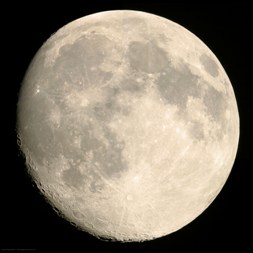 How old is life? New models suggest that life may have survive the Late Heavy Bombardment, making us all a lot older… Ted Nield reports
How old is life? New models suggest that life may have survive the Late Heavy Bombardment, making us all a lot older… Ted Nield reports
Geoscientist Online 27 May 2009
The timing of the origin of life has always been thought to depend on the timing of various inimical events in the history of the early Earth. One was the giant impact that created the Moon (at perhaps 4.5 Ga) and the end of the Late Heavy Bombardment - a period between 4.1 and 3.9 Ga when our planet was pounded by asteroidal bodies, and whose scars still pockmark the face of our satellite. Surely, the thinking went, no living thing could possibly have survived either event.
This idea fitted the earliest isotope-derived evidence for living processes; but these now come in at 3.8Ga, perilously close to the date for the end of the LHB. How quickly could life have arisen, and could it have done so more than once? Or could it even have been seeded here from its original home on Mars?
Geochemical evidence from detrital zircons dating from the Hadean began to suggest that the era (4.38-3.85Ga) had not been quite as infernal as it had been painted. Evidence began to emerge of liquid water at surface, as well as geochemical cycling rather similar to the sort we see around us today. Hadean life forms were no longer unthinkable. But any such hopeful monsters would still have had to get over the apparently impenetrable barrier of the LHB if they were to become our ancestors. And that was impossible. Or was it?
Well, apparently not. New research based on impact modelling and published in Nature in May suggests that the assumption that the LHB was not unsurvivable after all. Authors Oleg Abramov and Stephen Mojzsis (University of Colorado) make a few assumptions of their own in framing their impact model, but all seem to be in line with what we know today about biological distribution on Earth. They assume that one of the effects of bombardment was to spread living spores over the whole surface of the planet. We cannot know whether this is true, but we do know that organisms under about two millimetres in diameter are indeed dispersed globally, both by winds and groundwater.
They also assume that the deep biosphere at that time extended to about four kilometres down. This too is perfectly reasonable given that we have records of microbes today from boreholes as deep as 3.5km. They also assume that Hadean life could live at temperatures as high as 110 degrees, which is well within the tolerances shown by modern thermophiles. They also assume that areas sterilised by impacts will then be re-colonised.
Given these assumptions, their model shows that the idea of an impassable barrier is no longer tenable. At its worst, they say, only 37% of the Earth’s surface would have been sterilised, and under 10% would have felt temperatures over 500 degrees Celsius.
Although it is unclear how much photosynthesis could have been carried on during the LHB, this too is less of a problem than previously thought since genetic evidence suggests that the Last Universal Common Ancestor of living things was indeed a thermophile. Thermophiles specialise in other biochemical pathways that do not rely on sunlight to perform the necessary reduction.
- Ref: Abramov, O & Mojzsis S J., Microbial habitability of the Hadean Earth during the late heavy bombardment. Nature 459, 419-422 (21 May 2009).